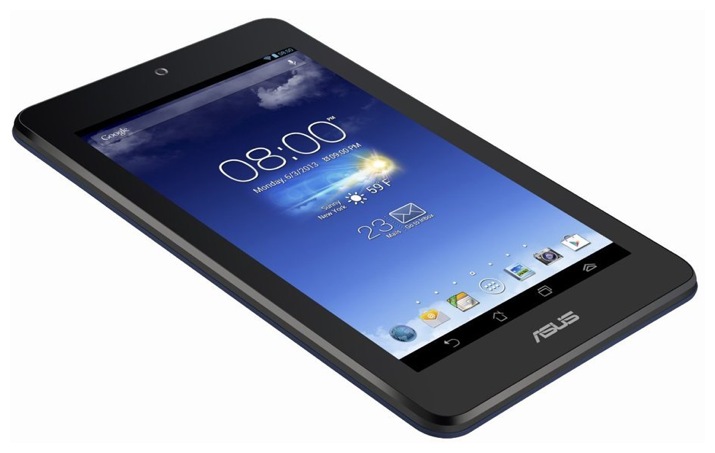Asus Memo Pad HD 7 review 11/17/13

Before plunking down $400+ for a Retina iPad Mini to replace my iPad 3, I wanted to give a cheap Android tablet a chance. So, when Amazon dropped the price of the Asus Memo Pad HD 7 down to $130, I ordered one in blue.
These are my thoughts after using the Memo Pad as my primary tablet for a week. I use tablets for checking social media, reading books, writing drafts of blog posts, and browsing websites.
The good
The Memo Pad is essentially the 2012 Nexus 7 in a new shell. It has a lower resolution screen than the 2013 Nexus 7 and Retina iPad Mini, but it’s still sharp and vibrant. It puts the non-retina iPad Mini to shame.
The size is great. The Memo Pad is light enough to use with one hand, and not slippery with the blue matte backing
The processor was quick, and I didn’t notice any red flags in terms of battery life. It’s nice being able to buy the 16 GB model with the knowledge you have an SD card slot for additional storage.
Android itself has come a long ways since the last time I used It a few years ago. I was particularly impressed with Press, a RSS reader, and Dash, an App.net client that’s better than anything I’ve used on iOS. I also enjoyed using apps that could tie more directly into the OS than is allowed on iOS. For example, there is an app called Twilight that changes the color temperature of your screen when the sun sets, much like the desktop app Flux.
The system share panel
The bad
The Memo Pad screen seems to have no oleophobic coating. Touch it with a finger and you will leave a greasy spot on the screen. This issue annoyed me enough to return the device. I’m spoiled by recent iPhones and iPads that have a great resistance to finger prints. The Memo Pad screen is more on par with what I remember from using my first generation iPhone and iPad. I don’t want to return to the days where I had to wipe the screen every five minutes with a microfiber cloth. I understand that a cheap device is going to have compromises, but I’d recommend Asus drop the rear camera instead of skimping on the usability of the screen.
The front facing camera was acceptable for Skype and Google Hangouts, but unfortunately you’re limited to using the external microphones because the headphone jack does not support headsets. I didn’t test the rear camera.
As of the time of this post, the Memo Pad still runs Android 4.2 which doesn’t support critical TRIM
Conclusion
Ultimately, I can’t recommend the Memo Pad HD 7 until Asus adds some oleophibic coating. A tablet essentially is the screen and you shouldn’t have to try to see it through a distracting coating of your own finger oils. If you can look past that issue, it’s an otherwise great tablet for the price.
Update: As of January 14th, 2014, Asus has not yet upgraded the Memo Pad HD 7 to Android 4.3 or greater.
-
Some of the other colors use a shiny and what I would guess is a more slippery plastic. ↩
-
I like being able to interact with notifications without leaving your current app. For example, you can archive a new email right from the notification shade. ↩
-
A chat client like Andchat can keep a persistent connection with your chat room. On iOS, a similar app like Colloquy will disconnect once every 10 minutes if it’s not in the foreground. ↩
-
TRIM is necessary to keep SSD and flash based storage devices working quickly. Essentially, it periodically recovers space from deleted files. ↩
